The origins and future of the interplanetary Internet

In our time, communication with spacecraft at a distance of two million kilometers from Earth is supported directly by huge antennas, known as the Deep Space Network . NASA communications centers are located in Canberra, Madrid and the California desert. Rovers send data to the spacecraft in the orbit of a space object, and the device then transmits data packets directly to Earth. A convenient way to communicate if there are very few probes and rovers in space. But now there are about a hundred, and because of this, you need to come up with a schedule of communication sessions.
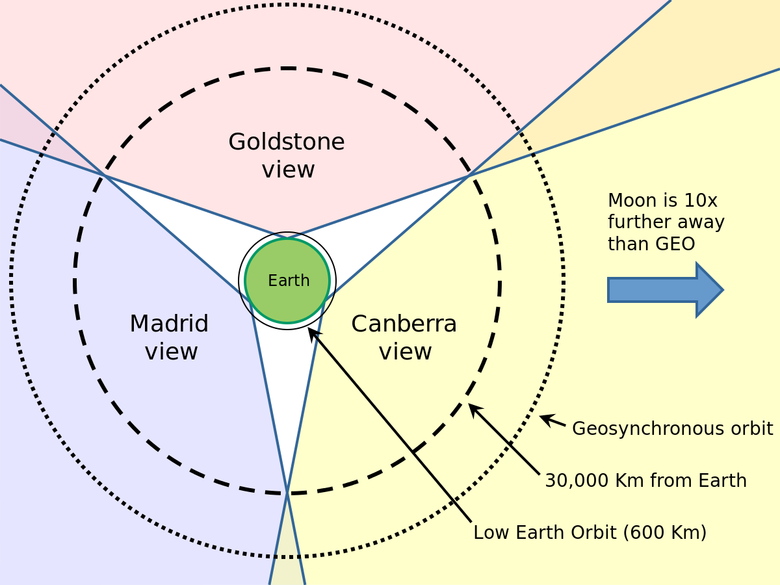
In 1998, DARPA began funding a group of scientists from NASA's Jet Propulsion Laboratory. This is how the interplanetary Internet project (Interplanetary Internet, IPN), a joint project of NASA and Google for providing ultra-long-distance space Internet, appeared. Within its framework, a new protocol was created for data exchange - without the need to transfer them directly to Earth: the nearest probes are included in the chain, which can save information and send it further. One of the founders of the protocol was Vinton Cerf , the “father of the Internet” and the vice president of Google, who developed the TCP / IP protocol stack. Since 1998, he has been working with NASA on an IPN project.
')
The idea of the interplanetary Internet
Vinton Surf’s speech at the Strelka Institute (Moscow) in 2011 implies that the idea of IPN appeared in 2004, when two spacecraft landed on Mars. Mars rovers needed to connect with the Earth directly, but the bandwidth of the channels was too small. Moreover, prolonged use of transmitters overheated devices. Therefore, scientists could not get the data. Then it occurred to one engineer that there was a second, higher-speed transmitter on the rovers, which could not send data directly to Earth. The devices were reprogrammed in such a way that the information first hit the satellite in Mars orbit, then the ISS, and then, at the optimal moment of the orbit, the Earth. So it turned out the packet switching system.

The terrestrial Internet was not adapted for space. For the terrestrial Internet, the lack of communication leading to the loss of a data packet is a deviation from the norm, and for space it is a common thing. The spacecraft can go into the shadow of the planet or be affected by flares on the sun, causing the connection to disappear. Sometimes it disappears for a long time. But in the case of space, data loss is unacceptable.
To solve this problem, they created the Bundle protocol, which was called DTN (Delay / Disruption Tolerant Networking). If the node could not transfer the data packet to the destination, the information is not deleted, but saved. Transmission attempts continue until the node contacts the other node and sends data to it. Information in any case reaches the recipient.

Suppose we need to transfer something from Pluto to Earth. A possible way is this: first to the probe near Mars, then to the probe in the moon’s orbit, and then to the Earth. If the Martian probe receives data, and communication with the lunar apparatus at this time is not, then the data will not be lost, but preserved. When the connection appears, the information will be successfully transmitted further. This method will provide the entire solar system with a fairly fast Internet. Now the signal to Pluto gets 4.5 hours, and to Mars - 3-20 minutes.
First, you can use DTN to pour the communication software into the already launched spacecraft. Even better is to launch special devices that allow you to work with data using this technology. They would transmit information at high speed using lasers. Such devices will become the basis of the interplanetary Internet (on the terrestrial Internet, its role is played by fiber optic cables passing over land and the ocean floor).
The basis for the IPN could be the NASA Mars Telecommunications Orbiter. It was planned that he would be the main communications center for the rovers and the mission control center on Earth. The launch was scheduled for 2009, the arrival into the orbit of Mars - for 2010, but the mission was canceled due to lack of funding.

Posted by: NASA / JPL - photojournal.jpl.nasa.gov/catalog/PIA07500
commons.wikimedia.org/w/index.php?curid=102953
The first test of the interplanetary Internet
The first DTN-protocol began to use the British satellite . He transmitted a large image to the ground station in 2008.
 Later, in November 2008, NASA successfully conducted the first large-scale interplanetary Internet test. As part of testing the system, a network of 10 nodes was created. One of these nodes was the EPOXI spacecraft, which simulated a Martian relay station. (Previously, it was known as Deep Impact . But after the successful bombardment of Comet Tempel’s comet with a copper 400-pound disc, the apparatus was renamed and sent to a meeting with another comet - Hartley 2 , to which it approached in 2010.)
Later, in November 2008, NASA successfully conducted the first large-scale interplanetary Internet test. As part of testing the system, a network of 10 nodes was created. One of these nodes was the EPOXI spacecraft, which simulated a Martian relay station. (Previously, it was known as Deep Impact . But after the successful bombardment of Comet Tempel’s comet with a copper 400-pound disc, the apparatus was renamed and sent to a meeting with another comet - Hartley 2 , to which it approached in 2010.)For data transmission in space, DTN protocol was used, resistant to disconnections. NASA experts were able to transfer about ten photos on board the EPOXI spacecraft, which was 32 million kilometers from Earth.
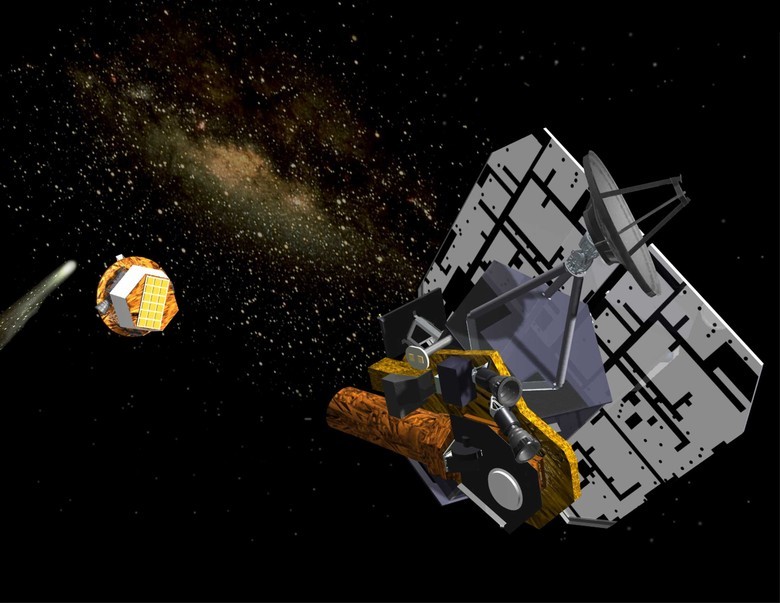
The remaining nodes remained on Earth: they simulated the landing modules and orbital modules on Mars. The experiment lasted a month. NASA then continued the test by sending interplanetary Internet equipment to the International Space Station.
Testing for ISS
In 2012, NASA and ESA (European Space Agency) transmitted data from the ISS to Earth using interplanetary Internet. The ISS commander, Sanita Williams, controlled a small robot from Lego from orbit; the robot itself was located at the European Space Flight Control Center in Darmstadt (Germany).
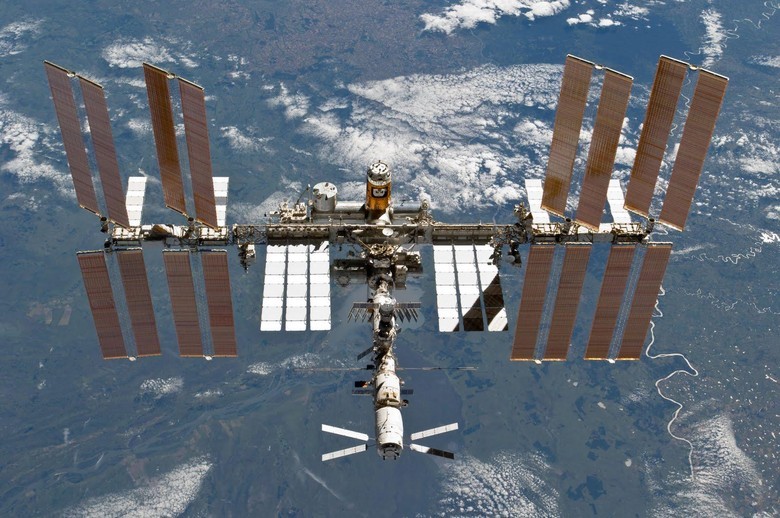
Now several nodes of the ISS support the DTN protocol, the ISS is part of the interplanetary Internet.
In the future, it is planned to use the DTN protocol on board a spacecraft in the vicinity of the Mars orbit to control rovers and other vehicles on the surface of the red planet.
The Mars Reconnaissance Orbiter and Mars Odyssey satellites support the prototype version of the interplanetary Internet software. Opportunity and Curiosity Martian rovers also use these protocols. Further projects are related to the expansion of the network and the connection of other space agencies to it.
In 2016, another experiment was conducted to control from orbit a robot on the earth's surface. British cosmonaut Tim Peak from the international team of the ISS flew the Bridget rover. The robot was on the Earth's range, simulating a Martian surface. Bridget successfully skirted obstacles and found interesting objects for science.
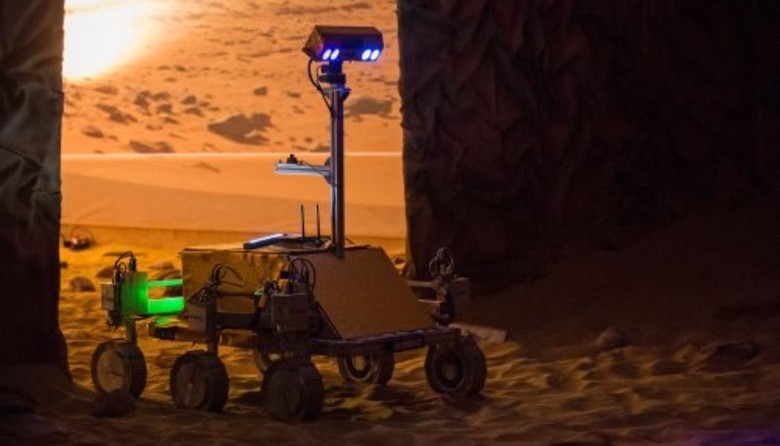
This experiment is one of the phases of the project that ESA, the UKSA (United Kingdom Space Agency) and the European branch of Airbus Defense and Space are working on. Together they create a way to remotely control robotics during space flight.
For experiments based on the Airbus Defense and Space in the UK, a Mars Yard was built. Polygon size of 30 × 13 meters is covered with "Martian" sand and stones. One area is brightly lit, and the other is darker, like a cave or a shaded area of the crater. Around the perimeter, scientists placed models of the “scientific” goals of the expedition.

On the illuminated site, the robot moved under the control of the staff of the European Space Flight Control Center in Darmstadt. For the passage of the shaded area control passed Tim Pick. He helped the robot to find "scientific objects", which were previously luminous paint.
These tests are part of the METERON project, a project to develop a space Internet that allows you to control robots from orbital spacecraft in real time.
The remote control system is required for deep space research.
Laser communication system and interplanetary Internet
A new milestone in the development of the interplanetary Internet system was the testing of a laser communication system placed on board the LADEE lunar probe (Lunar Atmosphere and Dust Environment Explorer) in 2013. The first laser test with LADEE took place on October 17, followed by three more successful sessions. The data transfer rate on board the device at a distance of 385 thousand kilometers between the Moon and the Earth reached 20 Mbit / s, and to the Earth - 622 Mbit / s. LADEE set a record for speed and amount of data.
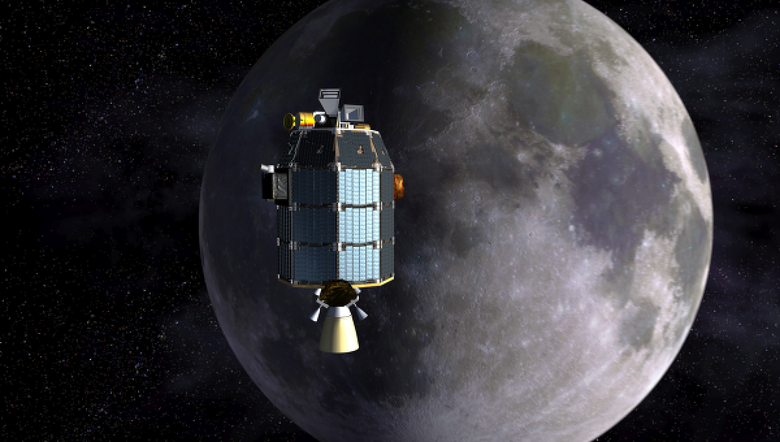
In the future, laser communication systems will allow real-time video transmission to Earth from the device when it is on another planet, or to hold teleconferences with future participants of interplanetary flights. Also, NASA has the intention to communicate with Martian or other devices at a distance of millions of kilometers from our planet.
Now LADEE is near the Moon, but the distance from Earth to Mars is a thousand times larger than to the Moon, so the laser system may be the only possible way to transfer data. NASA plans to improve the laser system by speeding up data transfer from Martian vehicles to 250 Mbps.
Mars, Ilon Musk and the project of interplanetary Internet
In November 2014, Ilon Musk announced a plan to create a new Internet provider based on space satellites. At that time, Musk and Weiler were working on a joint project, WorldVu Sattelites, but then their paths diverged. Google is interested in financing the project. It will help to connect to the Network remote areas of the Earth without coverage, and then the planned colony on Mars.
The Mask project differs from similar developments in that dozens of satellites will communicate with each other using lasers, rather than radio waves. This will increase the speed of data transmission and avoid problems with finding a free radio frequency spectrum.

Musk is going to launch hundreds of satellites into orbit at an altitude of 1200 kilometers above the Earth, distributing with their help the Internet. This is much closer than placing traditional communications at an altitude of up to 35 thousand kilometers. Because of this, the Internet provider Mask will be faster than satellite Internet. Musk claims that his Internet because of the vacuum in space will be 40% faster than fiber. On Earth, data passes through dozens of routers during transmission over optical fiber, and in space, the signal will immediately reach the satellite, move through the chain to the desired location and go down.
Oneweb and Richard Branson
In January 2015, Greg Weiler announced the creation of a similar satellite Internet provider OneWeb. The project received from the Virgin Group Richard Branson investment in 648 satellites, which is ten times greater than the number of devices of the largest satellite provider Iridium Communications. The project is scheduled to run until 2018.

According to Mask, he and Weiler strongly disagree on the architecture of the projects, although they pursue similar goals. Branson has his own opinion on this: he believes that Mask may have problems with the Internet going into space. Weiler’s company has licenses to use the corresponding frequencies, and in space there may be “physically insufficient space” for two providers simultaneously. The entrepreneur hopes that Musk will decide to work in a joint project with OneWeb.
The future is quantum communications
In the summer of 2014, a team of physicists from the University of Padua in Italy, led by Paolo Villoresi, conducted an experiment in the "firing" of four space satellites with polarized photons. Thus, scientists have demonstrated the basics of quantum communication between space and ground stations. The results of the study are presented in the article .
For quantum communications, fiber optic cables are required, but information on them will be transmitted for a short distance: the conductor material at some point can absorb photons.

Other communication methods involve the transmission of signals through the air, but over short distances (due to interference). In 2014, the record was 144 kilometers.
According to some scientists, one day the wireless transmission of qubits of information will reach the optimal speed, then the quantum communication with the spacecraft will become convenient and fast.
Quantum internet concept
Following the discoveries in the field of quantum communication, the concept of the quantum Internet of the future appeared. Researchers from the UK and Singapore reported that they were able to put into orbit of the Earth the first components of the system, which became the forerunners of the quantum Internet in space. It is planned that the nodes on Earth will transmit information in entangled photons to orbital satellites, which, in the absence of the atmosphere, will be able to redirect the beam from one device to another without loss and instantly carry the signal to a computer on the other side of the globe.

Scientists decided to check how the components of quantum communication will withstand the launch and whether they can work in orbit. For this, a satellite with a compact SPEQS device on board was sent into space. The device cannot receive or transmit information, it only creates correlated photon pairs and measures their properties. Photons from a BlueRay laser installed onboard pass through a system of crystals and mirrors and split into two parts, after which the detectors determine the property of each component of the pair.
The successful creation of correlated photons is the precursor of obtaining entangled photons , whose properties are interconnected, even if the particles are far from each other. It is this phenomenon that underlies quantum computing and future quantum communication networks. In the future, such devices will be able to transmit entangled photons to Earth and exchange them among themselves. As a result, an entire flotilla of satellites will appear in space, linking numerous stations on Earth.
The world's first quantum satellite - Mo Tzu
The Chinese advanced further in this direction. In August 2016, China put into orbit the world's first quantum satellite designed to test quantum communication systems.
Scientists hope that in this way they will be able to reduce losses in the transmission of a quantum signal. So far, the maximum distance at which it was possible to adjust the transmission of entangled photons via a fiber-optic cable is 400 kilometers. The greater the distance, the more difficult it is to ensure data transmission without loss, and the speed of information exchange drops significantly.
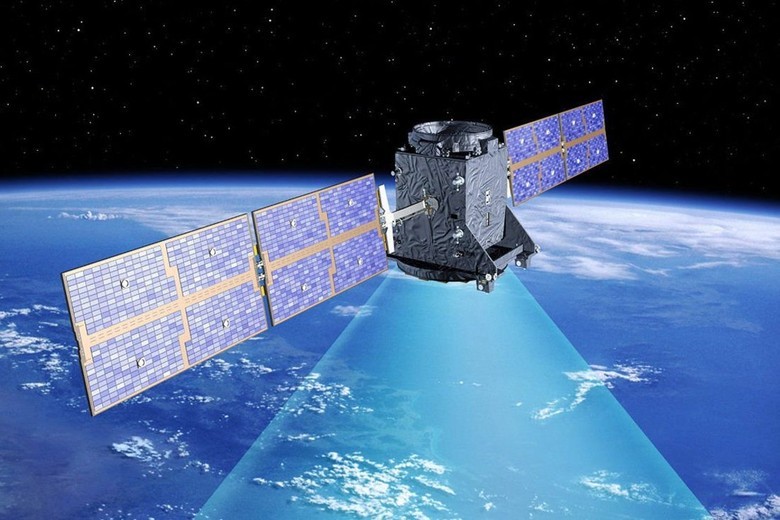
The Chinese satellite will experiment with the transmission of entangled photons between two stations located at a distance of 1200 kilometers. The experiment will last about two years, but if the first satellite shows good results, then China intends to launch several more vehicles. To create a fully-fledged, secure, quantum system of space communications, about 20 such devices are required.
Canadian scientists are conducting similar developments. Researchers also plan to create entangled photons and “shoot” them from the Earth into tiny microsatellites (cubsates) in near-earth orbit. Italian specialists, in turn, plan to launch entangled photons from mirrors installed on satellites that are already in orbit.
Scientists predict that within ten years there will be a fully protected "space Internet". In addition, it will be possible to combine quantum satellites and create a space telescope with fantastic resolution on their base.
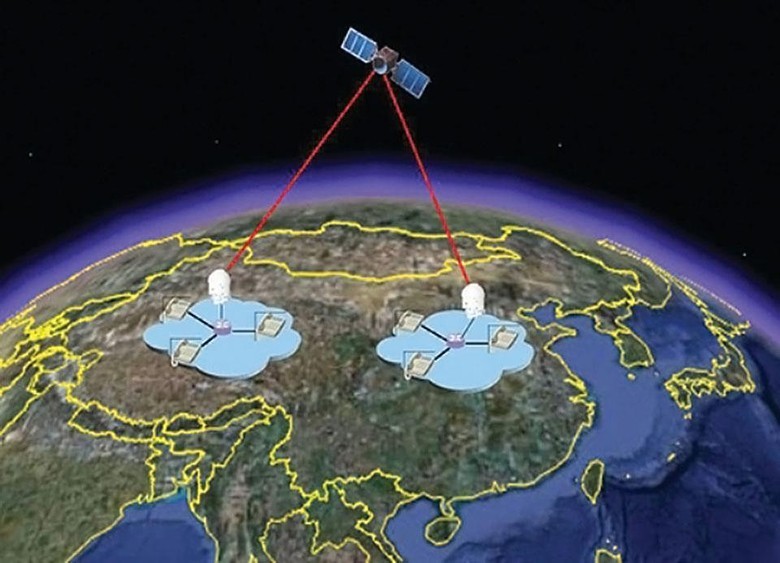
While quantum Internet technologies are very expensive, imperfect and vulnerable to certain types of attacks. Therefore, quantum systems can not replace the usual channels of information transfer. The main idea of quantum Internet is data encryption. The satellite, using a special quantum key distribution protocol, will provide ground stations with secure one-time passwords. Theoretically, the attacker will not be able to peep the passwords, and therefore open the encrypted communication channel between stations.
Conclusion
In the next 20 years, a number of countries are planning to land people on the Moon and Mars. The most famous programs in this direction create the EU and China. Other programs are being developed by India, Japan, Russia and Iran. Constant bases on the moon and the colonization of Mars are no longer ideas, but plans and programs that are gradually being brought to life. But the future of space travel depends on the speed of communications. The development of the interplanetary Internet marked the beginning of the creation of new complex space missions. Fast Internet in space will open endless opportunities for communication with spacecraft and satellites, simplify their support, and ensure reliable communication with astronauts on the surface of the Moon and Mars.
The International Advisory Committee on Space Data Transmission Systems ( CCSDS ) invites all space agencies of the world to install equipment using the DTN protocol on their new automated and manned spacecraft. Then, with each new device, a new node will be added to the network, even when it completes its scientific program. So, in 50-100 years, space exploration will develop faster and faster, and we will get a reliable information network to support space missions.
And the possibilities of the interplanetary Internet are not limited to this. NASA is considering using DTN for mobile communications on Earth: the network can be useful in places where the quality of communication is not very good or not at all.
Source: https://habr.com/ru/post/399315/
All Articles